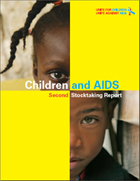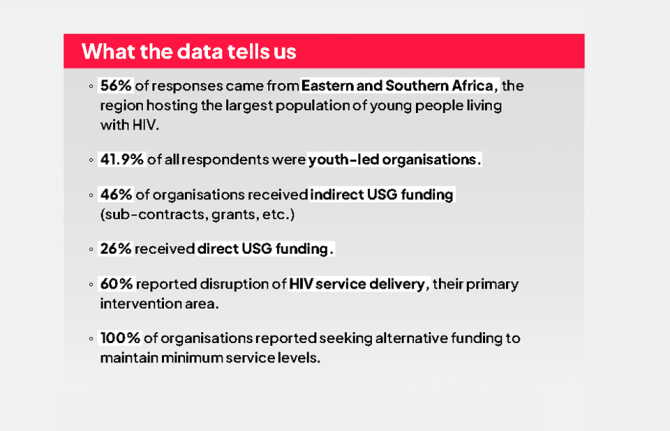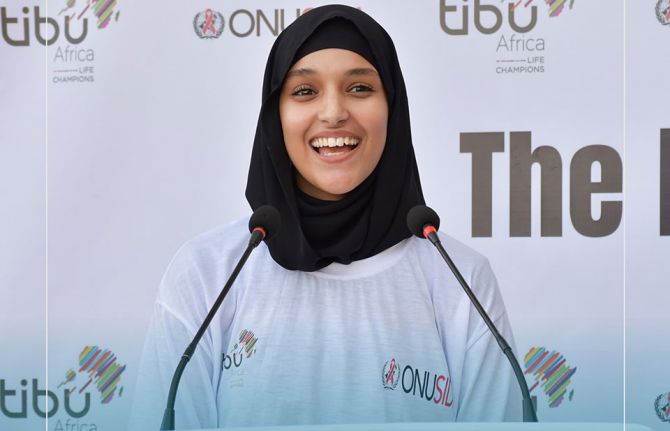
Feature Story
Second stocktaking report on children and AIDS
03 April 2008
03 April 2008 03 April 2008
For millions of children, AIDS has starkly altered the experience of growing up. In 2007, it was estimated that 2.1 million children under age 15 were living with HIV and 15 million children had lost one or both parents to the virus . Millions more have experienced deepening poverty, school dropout and discrimination as a result of the epidemic.
Nonetheless, important progress has been made in reducing the spread of AIDS since UNICEF and UNAIDS issued a Call to Action to Unite for Children, Unite against AIDS in October 2005, according to the new ‘Children and AIDS: Second stocktaking report’.
The report, co-authored by UNICEF, UNAIDS and WHO reviews progress made on children and AIDS in four key areas: Preventing mother-to-child transmission of HIV; Provision of paediatric treatment; protection and support of children affected by AIDS; and prevention of infection among adolescents and young people.
Prevention mother-to-child transmission of HIV
The ‘Children and AIDS: Second stocktaking report’ highlights that improvement in preventing mother-to-child transmission of HIV (PMTCT) has seen the most significant gains. In 2005, only 11% of women living with HIV received drugs to prevent transmission of the virus to their children; however by the end of 2006 that figure had risen to 31%.
In 2006, Botswana reported that only 7% of infants born to HIV-positive mothers became infected with HIV, compared to 35–40% before the PMTCT programme began.
However, most of the 2.1 million children under 15 living with HIV in 2007 were infected before their birth, during delivery or while breastfeeding.
Provision of paediatric treatment
Advances in paediatric care have been equally dramatic. In 2005, only 70,000 children were receiving antiretroviral drugs (ARVs) but in 2006, that number had risen to 127,000 – a 70% increase in one year.
In South Africa , mortality was reduced by 75% in HIV-positive infants who were treated before they reached 12 weeks of age.
Protection and support of children affected by AIDS
The stocktaking report also show progress on the protection and care for children affected by AIDS in many countries and on their access to social services. Progress has also been made in school enrolment rates for children who have lost both parents to the disease, although children affected by HIV are still more likely to fall behind in school and to live in poorer households.
Prevention of HIV infection among adolescents and young people
The report highlights the urgent need for better evidence-based information on the behaviours of adolescents and young people to improve and focus HIV prevention efforts to where they will be most effective. It also outlines the importance of involving young people in the design, implementation and monitoring of HIV prevention programmes for young people.
In Latin America and the Caribbean, MTV has been working with UNICEF to produce ‘Sexpress Yourself’, a one-hour special in which young people talk openly and honestly about sex, sexuality, gender roles and HIV.
In India, focused peer outreach programmes, youth-friendly health services and communication activities in 43 high-prevalence districts are helping to reach adolescents, young people and especially girls at high risk.
While the news is mixed, the report argues that achieving an AIDS-free generation is possible. For that, the report calls for action to strengthen communities and families whose role is crucial to every aspect of a child-centred approach to AIDS; reinforce health, education and social welfare systems to support children affected by AIDS; integrate services for PMTCT programmes; and consolidate data in order to document advances and shortfalls and strengthen commitment.
Second stocktaking report on children and AIDS
Cosponsors:
Press center:
Feature stories:
Signs of progress in global response to Children and AIDS (16 January 2007)
Publications:
Children and AIDS - Second Stocktaking report (pdf, 2.45 Mb)
Related
 “Who will protect our young people?”
“Who will protect our young people?”

02 June 2025


